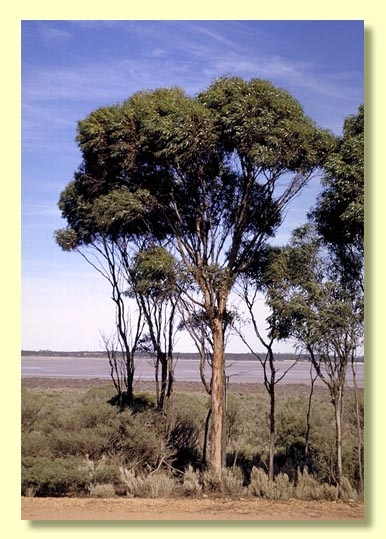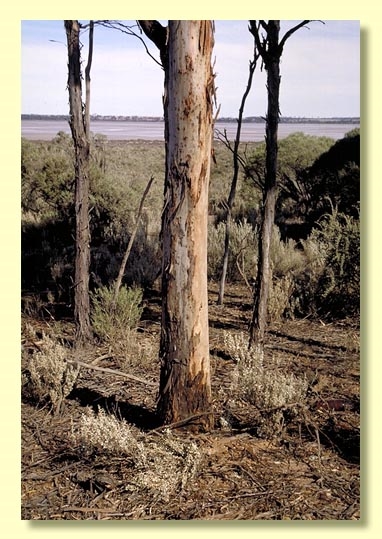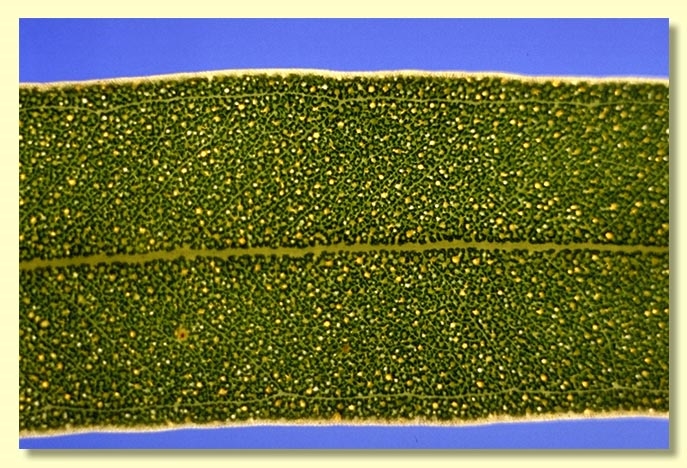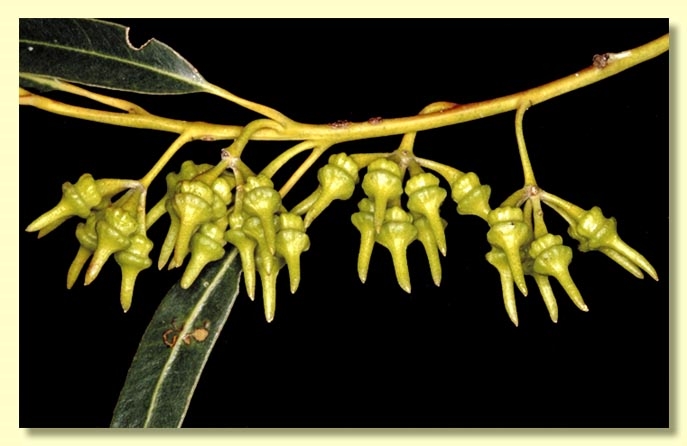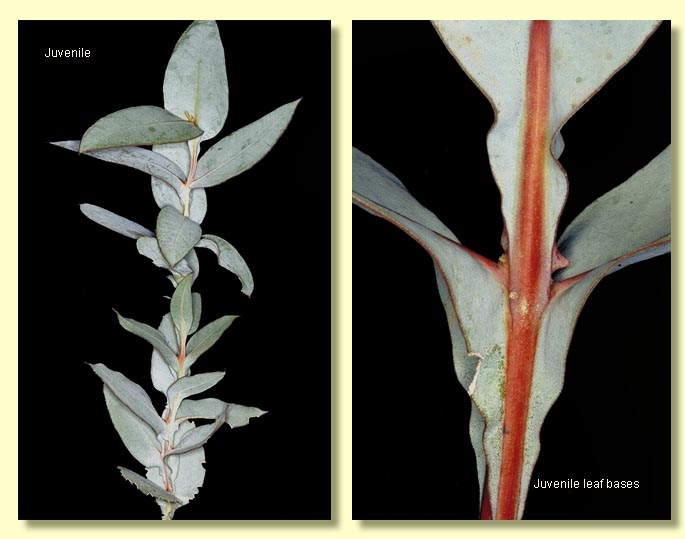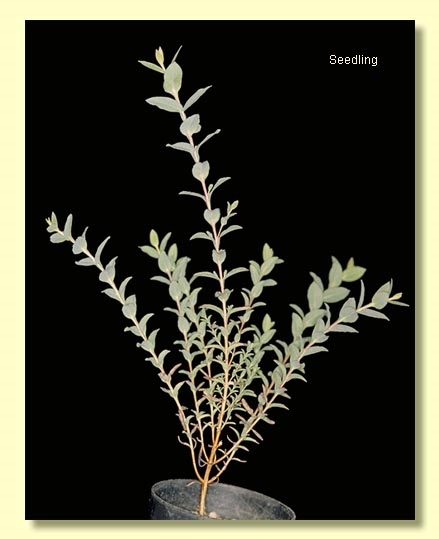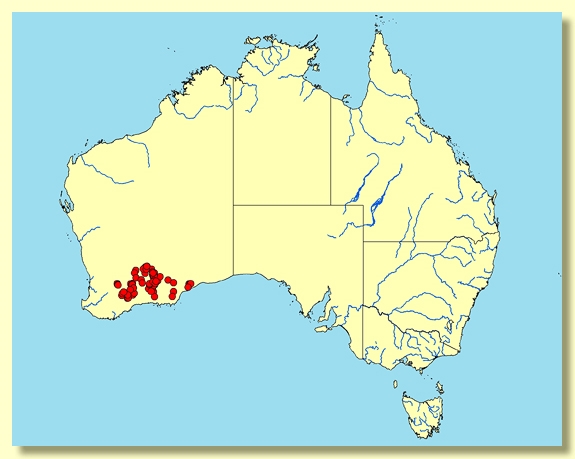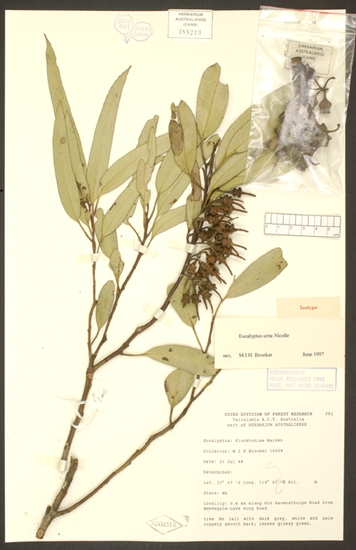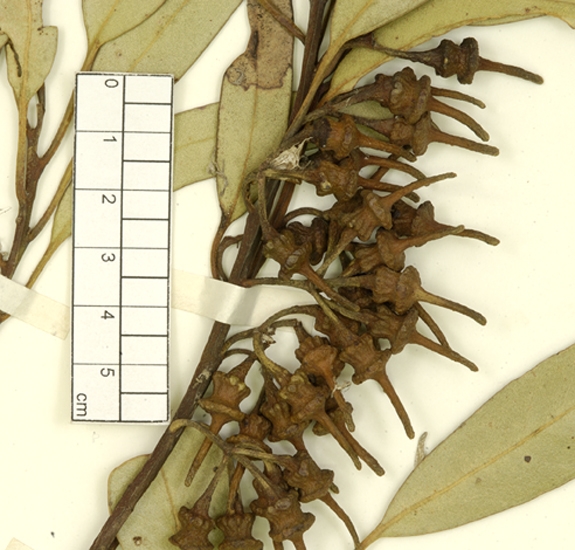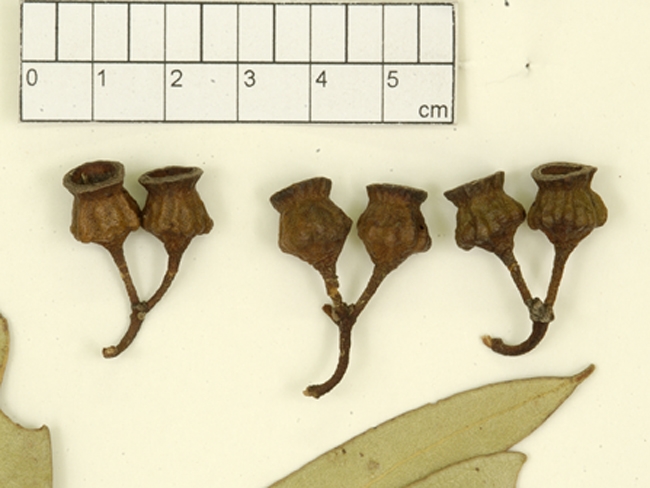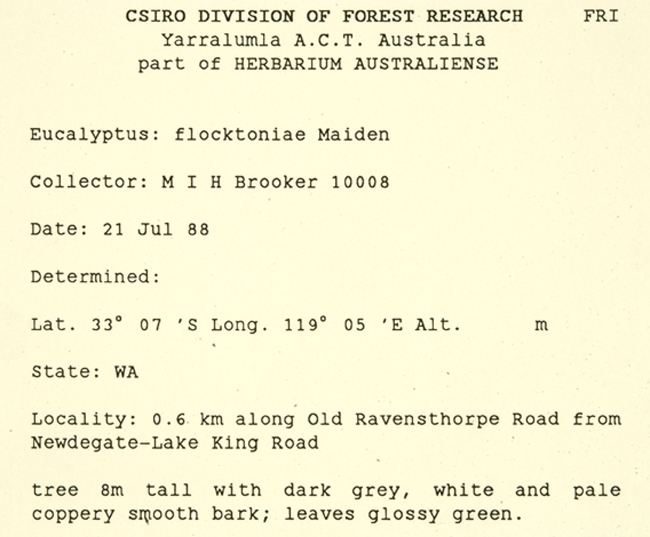Euclid - Online edition
Eucalyptus urna
Eucalyptus | Symphyomyrtus | Bisectae | Destitutae | Subulatae | Decurrentes
Bark smooth throughout, grey to white to orange-brown or coppery, often highly glossy with a silvery appearance.
Branchlets lacking oil glands in the pith.
Juvenile growth (coppice or field seedlings to 50 cm): stems square in cross-section and prominently winged due to decurrent leaf bases, becoming rounded further up the stem, stems sometimes glaucous; leaves opposite, sessile, ovate to elliptical, with leaf base decurrent on stem, dull grey-green to blue-green to slightly glaucous, becoming alternate, shortly petiolate, lanceolate with tapering bases, glossy green; 2–9.5 cm long, 1.3–4 cm wide.
Adult leaves alternate, petiole 1.2–2.2 cm long; blade narrowly lanceolate to lanceolate, sometimes falcate, 6–14 cm long, 0.8–2.2 cm wide, base tapering to petiole, concolorous, very glossy, dark green, side-veins at an acute or wider angle to midrib, densely to very densely reticulate, intramarginal vein parallel to and just within margin, oil glands numerous and mostly intersectional.
Inflorescence axillary unbranched, peduncles (0.7)1–1.7 cm long, pendulous; buds 7 to 13, pedicellate, pedicels (0.3)0.5–1.1 cm long. Mature buds 1.5–2.4 cm long, 0.4–0.9 cm wide, hypanthium urceolate and ribbed, scar present, operculum beaked to horn-shaped (0.9–1.6 cm long), wider than the hypanthium at the join, stamens inflexed, anthers versatile, basifixed, globoid, dehiscing by slits, style long, stigma tapered, locules 3 or 4, the placentae each with 4 vertical ovule rows. Flowers creamy-yellow to white.
Fruit pendulous, fruit pedicellate, pedicels 0.3–1.2 cm long, urn-shaped, hypanthium sometimes ribbed, 0.7–1.2 cm long, 0.5–1(1.1) cm wide, disc descending, valves 3 or 4, valve tips strongly exserted due to fragile style remnants.
Seeds glossy brown to grey, 1.5–2 mm long, ovoid or flattened-ovoid, rarely pointed at one end, occasionally with shallow longitudinal furrows on otherwise smooth dorsal surface, hilum ventral.
Cultivated seedlings (measured at node 10): cotyledons Y-shaped (bisected); stems square in cross-section and prominently winged due to decurrent leaf bases; leaves opposite, sessile, linear for the first few nodes then ovate to elliptical, dull, blue-green to grey-green, 1.2–3 cm long, 0.5–2.5 cm wide, leaf base decurrent on stem.
Flowering has been recorded in January, February, April, May, July, October, November and December.
A mallet endemic to Western Australia, very widespread east and south-east of Perth in the southern wheatbelt east from Lake Grace, in the central and southern Goldfields and further eastwards to Caiguna. The bark is smooth and the adult leaves are very glossy, green.
Eucalyptus urna belongs in Eucalyptus subgenus Symphyomyrtus section Bisectae subsection Destitutae because buds have two opercula, cotyledons are Y-shaped and branchlets lack oil glands in the pith. Within this subsection E. urna is part of a large taxonomic series Subulatae further characterised by globoid basifixed anthers, grey smooth seeds with shallow longitudinal furrows, and fruit with persistent exserted style remnants. Series Subulatae is divided principally into four subseries based on the juvenile leaves, one with spiral, crowded seedling phyllotaxis (subseries Spirales), another with decussate and decurrent seedling leaves (subseries Decurrentes), another with decussate non-decurrent seedling leaves (subseries Decussatae), and a fourth with disjunct, petiolate seedling leaves (subseries Oleaginae).
Eucalyptus urna is part of subseries Decurrentes where it is distinguished by the mallet habit and associated lack of a lignotuber, and with the extreme sculpturing of the pendulous buds and fruit. Juvenile growth is conspicuous, being greyish to glaucous with strongly decurrent leaves.

